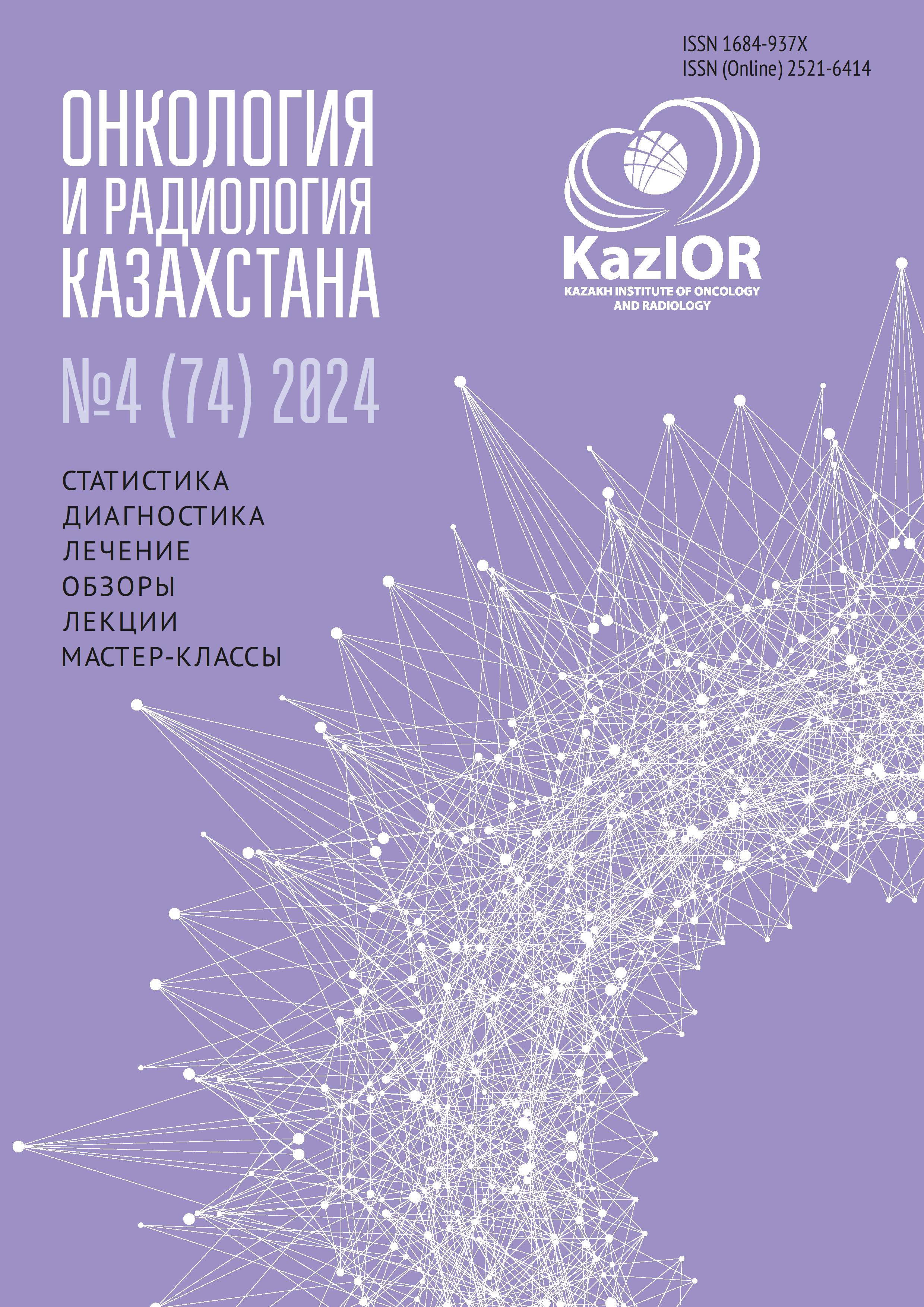Analysis of cervical cancer cases and Human Papylloma Virus prevalence in Zhambyl Region in 2021-2023
DOI:
https://doi.org/10.52532/2521-6414-2024-4-74-300Keywords:
barriers to the prevention of cervical cancer, modern cervical cancer prevention strategies., precancerous lesions of the cervix, prevention of cervical cancer, screening for cervical cancerAbstract
Relevance: There are strategies of the World Health Organization (WHO) for the prevention and screening of cervical cancer (cervical cancer), but the annual incidence of cervical cancer and mortality from this disease continue to force the world community to look for ways to improve approaches to its prevention and early detection. The possibilities of prevention and early detection of breast cancer are among the most difficult in practical oncogynecology.
The study aimed to evaluate the incidence of cervical cancer in the Zhambyl region for 2021-2023 and determine the spread and prevailing type of human papillomavirus in cervical cancer.
Methods: The study was conducted based on data from medical records of patients diagnosed with breast cancer registered with the state municipal enterprise on the right of economic management Zhambyl Regional Multidisciplinary Center of Oncology and Surgery (Zhambyl, Kazakhstan) from 2021 to 2023. Statistical data analysis was performed using the descriptive statistics program of the Statistica 8.0 computer software package (StatSoft, Russia). The data were described as the frequency and proportion (%) of the total cases for categorical variables.
Results: In 2021, the average age of patients with cervical cancer (cervical cancer) will be 52 years, with a range from 29 to 83 years. In 2022, the average age dropped to 50 (28-73) years. In 2023, the population’s average age will increase to 53.8 years (33-82 years). This indicates a possible age dynamics among patients. Diagnostic effectiveness: in 2023, 99 cases of cervical cancer were identified, of which 51% of patients tested positive for human papillomavirus (HPV). In 2023, the effectiveness of screening programs significantly increased; 23 screening cases were identified, compared with 16 cases in 2021 and 8 in 2022.
Conclusion: Analysis of data on the Zhambyl region for 2021-2023 revealed an increase in the average age of women with breast cancer, which requires further study. Improved screening programs and increased public awareness have led to an increase in the number of cases diagnosed at early stages, positively affecting treatment outcomes. Against the background of the high prevalence of HPV, especially its types 16 and 18, the need for timely diagnosis and vaccination against this virus becomes especially urgent.

